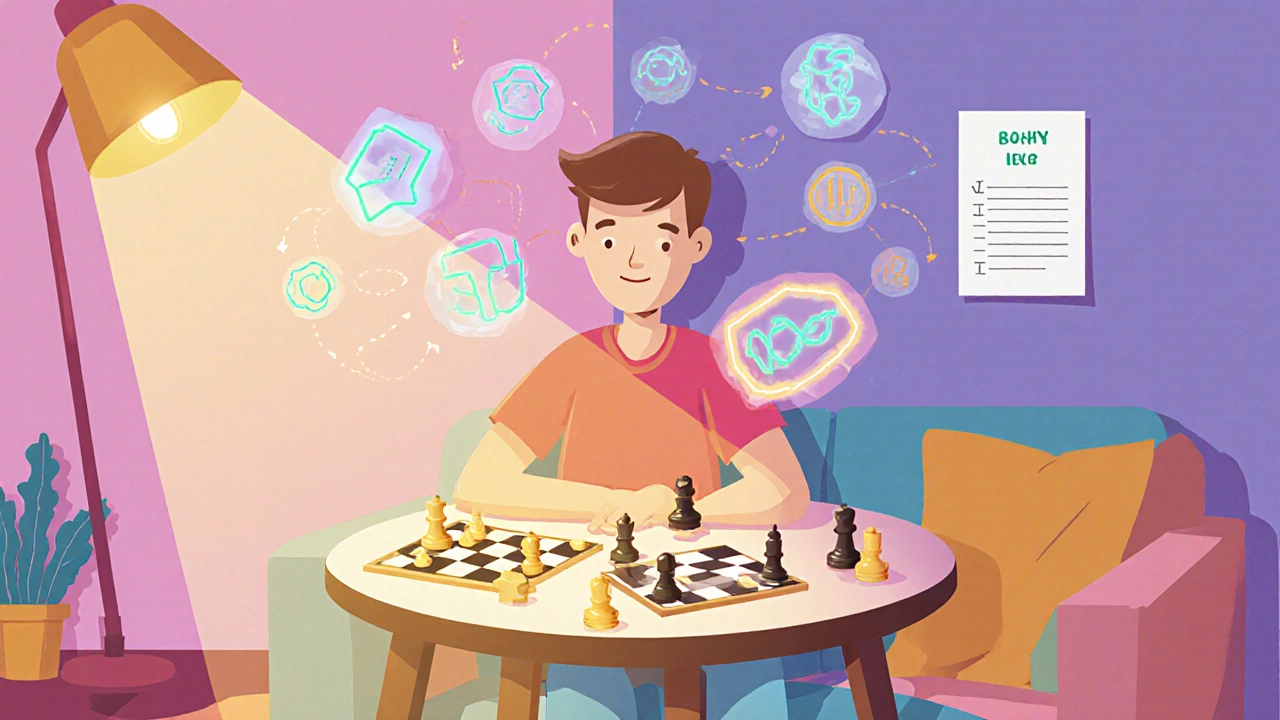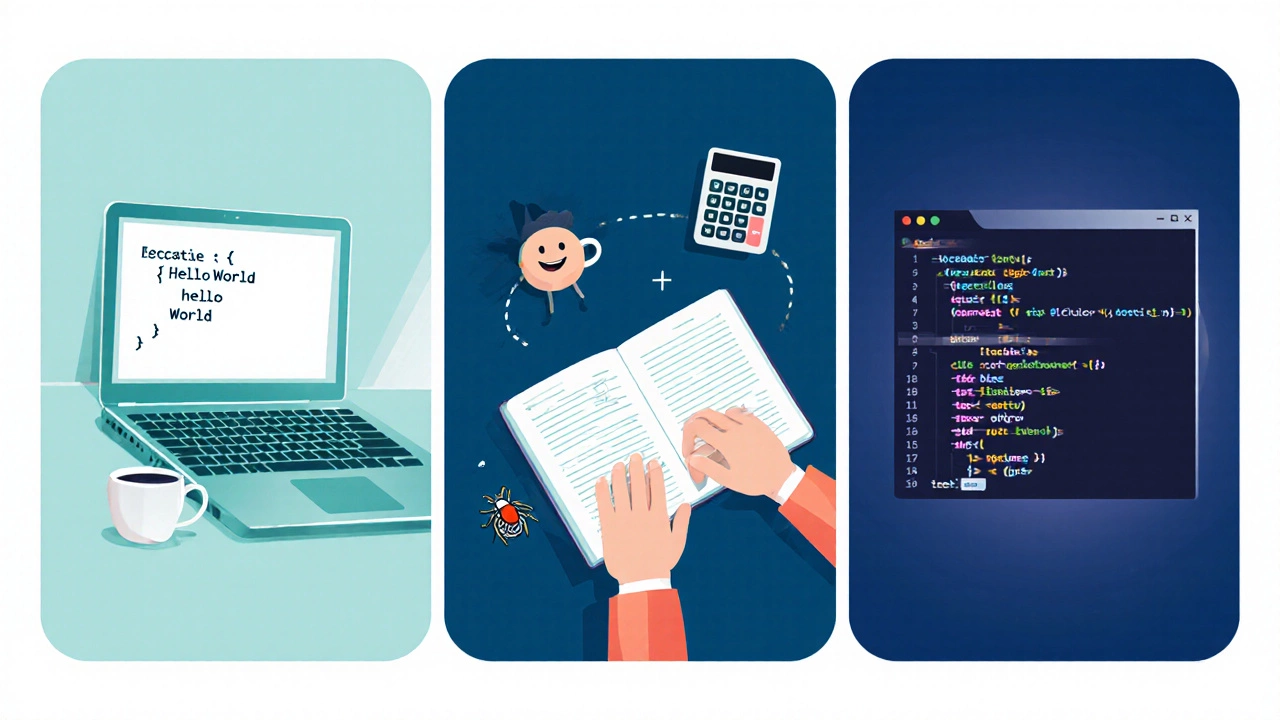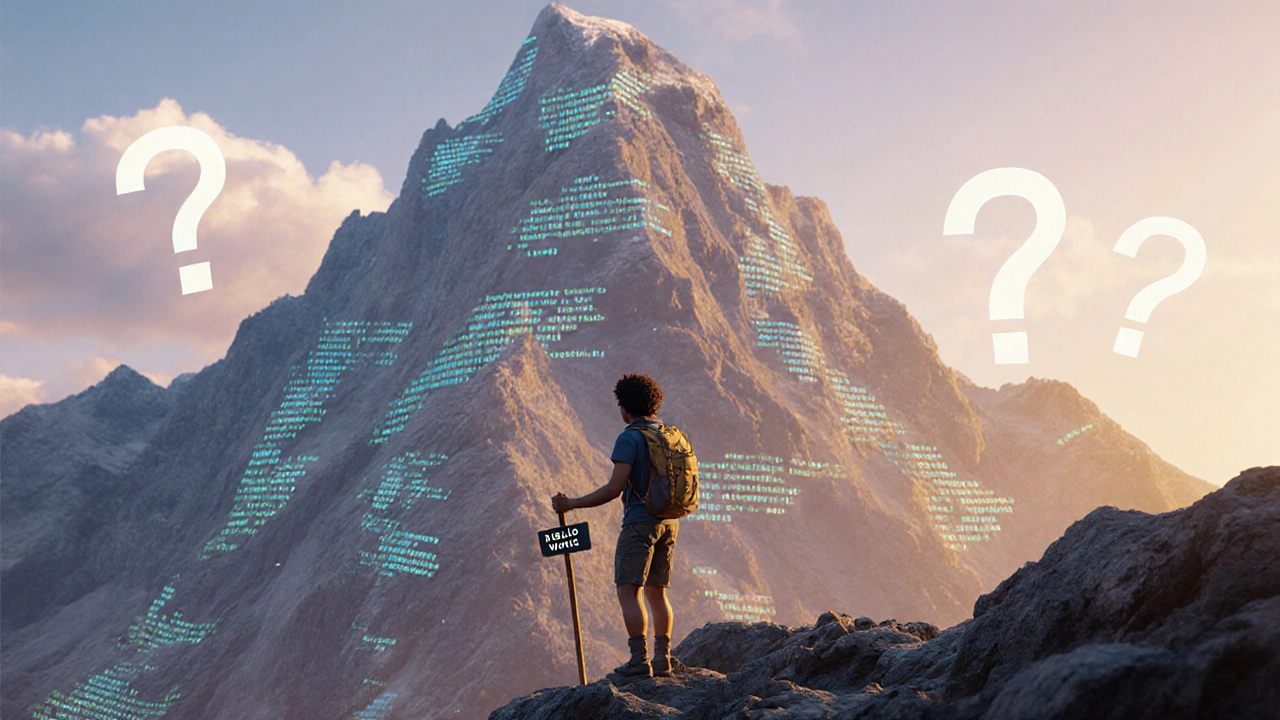Coding is the process of writing instructions that a computer can execute. Many people wonder if it’s a mountain too steep to climb, especially when they see rows of cryptic code on screen. The good news? The biggest blocks are often mental, not technical. Below you’ll find the real reasons coding feels hard, practical ways to melt those blocks, and a quick checklist to see if you’re ready to start.
Key Takeaways
- Most beginners struggle with coding difficulty because they focus on syntax rather than problem solving.
- Choosing a beginner‑friendly language (Python, JavaScript, or Scratch) cuts the learning curve dramatically.
- Consistent practice, breaking problems into tiny steps, and learning to debug are more effective than memorising code snippets.
- Good coding classes teach concepts, give instant feedback, and keep projects relevant to your interests.
- Everyone starts as a novice - the only thing separating successful learners is persistence and the right learning strategy.
Myth #1: You Need a Math PhD to Code
It’s a common story that only math geniuses can write software. In reality, most professional developers use basic arithmetic and logic daily. What matters more is logical thinking - the ability to break a problem into steps. Logic Thinking is the skill of structuring problems so a computer can follow them. You can develop that skill with puzzles, board games, or simple everyday tasks like planning a grocery list.
Myth #2: You Must Memorise Hundreds of Commands
Early tutorials often throw a wall of syntax at you - semicolons, brackets, indents - and expect you to remember each rule. If you treat code like a foreign language, you’ll get stuck. Instead, focus on patterns. For example, a Loop (whether a for‑loop or while‑loop) repeatedly runs a block of code. Once you understand the pattern, the exact characters become secondary.
What Actually Makes Coding Tough?
Three core areas trip up most beginners:
- Conceptual Overload - trying to learn variables, data types, control flow, and debugging all at once.
- Syntax Errors - a missing colon or stray quote stops the program, leading to frustration.
- Problem‑Solving Mindset - not knowing how to translate a real‑world task into logical steps.
Addressing each area with targeted practice turns the learning curve into a gentle hill.

Beginner‑Friendly Languages: Quick Comparison
| Feature | Python | JavaScript | Scratch |
|---|---|---|---|
| Typical Use‑Case | Data analysis, web back‑ends, automation | Web front‑ends, interactive sites | Visual games, animations, introductory logic |
| Learning Curve | Gentle - readable syntax | Moderate - syntax quirks (e.g., curly braces) | Very gentle - drag‑and‑drop blocks |
| Community Resources | Extensive - Codecademy, Real Python | Wide - freeCodeCamp, MDN Docs | Rich - Scratch website, teacher guides |
| First Project Idea | Simple calculator | Interactive webpage button | Animated character that moves on key press |
All three are solid starters, but if you prefer seeing results instantly, Scratch offers visual feedback without typing. If you aim for web development later, JavaScript is the natural bridge. For a balance of readability and real‑world power, Python wins the popularity vote among beginners.
Practical Strategies to Tame the Challenge
Below are proven habits that turn the initial confusion into confidence.
- Start Small, Iterate Fast: Write a program that prints "Hello World". Then modify it to ask for your name and greet you. Tiny wins build momentum.
- Use Built‑In Debuggers: Every modern IDE (Integrated Development Environment) has a debugger. Debugging is the process of finding and fixing errors in code. Step through your code line by line to see variable values - it’s like watching a movie of your program.
- Break Problems into Sub‑tasks: Want to sort a list? First write code that swaps two numbers, then loop through the list, then compare each pair. Each sub‑task becomes a mini‑project.
- Learn by Teaching: Explain a concept to a friend, a rubber duck, or even a blog post. The act of articulation reveals gaps instantly.
- Choose the Right Class: Look for courses that combine short video lessons with hands‑on exercises, immediate feedback, and a supportive community. Platforms like Codecademy offers interactive, browser‑based coding lessons with real‑time checks and Code.org provides free, game‑like modules for absolute beginners.
What to Look for in a Good Coding Class
Not all classes are created equal. Here’s a quick checklist:
- Clear Learning Outcomes - Each lesson should state what you’ll be able to do afterwards.
- Project‑Based Curriculum - Building something tangible (a website, a simple game) reinforces concepts.
- Instant Feedback Loop - Automated tests or instructor comments keep you from getting stuck for days.
- Community Support - Forums, Discord channels, or study groups help you troubleshoot quickly.
- Flexibility - On‑demand videos let you learn at your own pace, crucial for busy beginners.

Real‑World Success Stories
Emma, a 34‑year‑old accountant from Manchester, started with Scratch to understand the flow of logic. Within three months she moved to Python and built an automated spreadsheet parser that saved her firm 10hours a week. Raj, a high‑school teacher in Leeds, used Code.org’s “Hour of Code” to spark interest in a class of 30 students; six of them pursued computer‑science degrees later.
These stories share a pattern: start with visual or simple syntax, practice daily, and choose a class that offers feedback. If they could do it, you can too.
Next Steps: Your Personalized Action Plan
Grab a notebook and follow these three days:
- Day1 - Pick a language from the comparison table. Install the free editor (VSCode for Python/JS, Scratch online editor for visual coding). Write “Hello World”.
- Day2 - Add user input. Create a mini‑project (calculator, simple game). Post your code on a community forum for feedback.
- Day3 - Spend 15minutes debugging a deliberately broken snippet. Identify the error, fix it, and note the pattern.
After three days you’ll have a functional script, a taste of debugging, and a sense of progress - the three pillars that make coding feel manageable.
Frequently Asked Questions
Do I need a computer science degree to learn coding?
No. Many self‑taught developers land jobs after completing a few focused coding courses. The key is practical experience, not a formal diploma.
How much time should I spend practicing each day?
Consistency beats marathon sessions. Aim for 30‑45 minutes daily. Short, focused practice cements concepts better than occasional long blocks.
Is Python really the easiest language for beginners?
Python’s readable syntax and massive community make it a top choice, but “easiest” depends on your goal. If you want visual feedback, Scratch may feel easier at first.
What’s the best way to deal with syntax errors?
Read the error message carefully - it tells you the line and often the missing character. Then use a linter or IDE hints to catch mistakes before running the code.
Can I learn to code without spending money?
Absolutely. Websites like Code.org, free sections of Codecademy, and YouTube tutorials provide high‑quality instruction at no cost.
